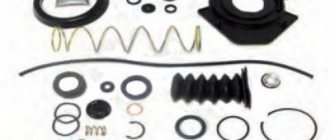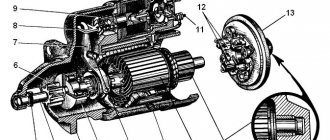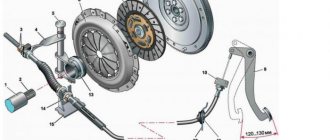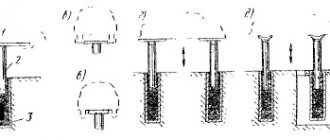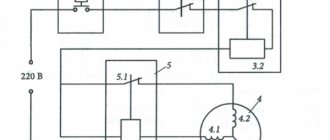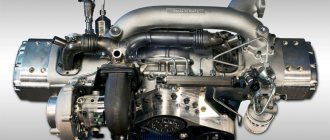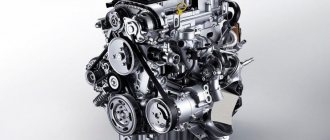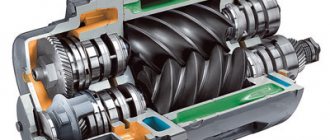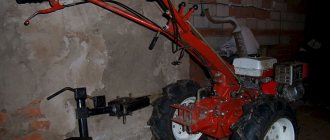Best DIY Equipment
Homemade products with an engine from a walk-behind tractor (read do-it-yourself harrow for a walk-behind tractor) are also of some interest. Among them, the greatest interest is in the manufacture of a snowmobile. As a running gear, you can use a transport tape on which you need to attach snow hooks.
In addition, interesting are the options for manufacturing other various types of equipment from a walk-behind tractor:
- All-terrain vehicles. The design resembles a mini tractor, but has wheels of a higher diameter. This is necessary so that the unit can pass through the most difficult terrain.
- Mini tractors. We have already considered this design, which includes an additional part of the frame for a second pair of wheels, as well as steering wheels and the driver’s seat.
Motoblock ZUBR modified clutch lever
For more information about the operation of a diesel walk-behind tractor, see
Of course, 2-stroke engines are also available, but they are used in fairly old models of walk-behind tractors, being significantly inferior to 4-stroke engines in terms of power thrust. However, most consumers get 4-stroke gasoline engines. Their device includes the following systems:
- The system responsible for supplying fuel. Consists of a fuel tank, carburetor, air filter and fuel hose.
- A lubrication system that carries out the process of lubricating those parts that rub against each other.
- A starter that spins the crankshaft.
- A cooling system that removes heat from the engine cylinder block using air flow.
- An ignition system that produces a spark at the spark plug.
- A gas distribution system that ensures the flow of the air-fuel mixture into the engine cylinder and is also responsible for the exit of exhaust gases.
The important thing is that the engine is sold with all the main operating systems, which greatly facilitates the process of making a homemade walk-behind tractor.
Modifications
Lifan 168F-2
The cheapest configuration with a connecting shaft size of 19 or 20 mm. The manufacturer's price is 9,100 rubles.
For more details about the operation of the Lifan 168F-2 engine, watch the video:
Lifan 168F-2 7A
Motor variant equipped with a lighting coil capable of powering consumers up to 90 W. This allows it to be used on a variety of equipment that require lighting devices: motorized towing vehicles, light swamp vehicles, and so on. Price – 11,600 rubles. The shaft landing diameter is 20 mm.
Lifan 168F-2 ignition circuit
The power unit has a conical shaft output; it differs from the base model only in the conical groove of the crankshaft toe, which ensures a more accurate and tight fit of the pulleys. Price – 9500 rubles.
Lifan 168F-2L
This engine has a built-in reduction gearbox with a landing diameter of the output shaft of 22 mm and costs 12,100 rubles.
Motor Lifan168F-2R
The motor is also equipped with a reduction gear, but with an automatic centrifugal clutch, and the landing size of the secondary shaft of the gearbox is 20 mm. Engine cost: 14,900 rubles.
Lifan 168F-2R 7A
As is clear from the markings, this version of the engine, in addition to a reduction gearbox with an automatic clutch mechanism, has a seven-amp light coil, which increases its price to 16,500 rubles.
Lifan 168FD-2R 7A
The most expensive version of the engine, priced at 21,500 rubles, is distinguished not only by the diameter of the gearbox output shaft increased to 22 mm, but also by the presence of an electric starter. However, the rectifier required to charge the battery is not included in the delivery package.
DIY accessories for a walk-behind tractor
I would like to start analyzing homemade products with the direct production of walk-behind tractors with my own hands. There is no question here that we will make the unit from scratch, because this is technically impossible for home conditions.
The main working units will be taken from other equipment; all we have to do is prepare a certain base on which all the parts of the walk-behind tractor could be successfully connected.
I would like to talk about diesel walk-behind tractors on 4 wheels, the homemade construction of which will be discussed later. At their core, these units are similar in appearance and in their technical data to full-fledged mini tractors.
To help farmers, companies produce a variety of special equipment to facilitate the work and maintenance of the farm. Here is everything about the design and characteristics of the Khryusha grain crusher.
Millions of people on our land are engaged in gardening and farming. Cultivators for the garden will save your time, health and energy.
Those who have their own household should find out what the process of milking using a milking machine is. By clicking on the link, you will become familiar with the AID 2 milking machine.
The only difference is the lack of a differential lock on the walk-behind tractors, but otherwise they are very similar - the presence of a driver’s seat, steering, and the presence of two pairs of wheels.
It is clear that the modification will be based on adding several additional components to the existing walk-behind tractor - an additional frame for the second pair of wheels, installing a steering wheel and a seat under which the speed control should be located, etc.
“Wheel sizes for walk-behind tractor”
You can view all photographs, drawings, pictures and diagrams from the “Wheel and tracked drive” category by clicking on the link. You will find even more materials with descriptions of how to make a motor-cultivator and accessories for it yourself in the section “Drawings of units and parts of a walk-behind tractor” or by selecting from all materials on the site motoblok.populjarno.com at the following TARKS: description, how to make, wheels, drawings, instructions .
READ How to Make a Clutch on a Motoblock
Perhaps what you are looking for is in one of the most viewed sections of our website:
DRAWINGS AND PHOTOS OF HOMEMADE MOTOR-BLOCKS and ATTACHMENTS (CLICK ON THE PICTURE or name):
Comments on the material “Arrangement of metal wheels with lugs for a walk-behind tractor” are located at the bottom of the page - here you can express your opinion, ask for advice from visitors to our site, share interesting materials, talk about your positive or negative experience in assembling walk-behind tractors and trailed equipment with your own hands. If you have questions or suggestions about this material, please leave your comment below. For those who want to share their photos using the keywords “homemade wheels, for a walk-behind tractor, with lugs, drawing, dimensions, do-it-yourself, how to make, instructions” or any other questions about diesel, gasoline, light, medium or heavy homemade walk-behind tractors, motor cultivators and attachments for them - you need to register and use the link “Add a photo. "(visible after registration on the page of all Photo Albums of walk-behind tractors and attachments).
| Dimensions
If earlier harrowing and plowing had to be done almost manually, using a minimum number of auxiliary tools, now this could be done using special equipment. In this case, we are talking about walk-behind tractors - units that are full-fledged assistants in the garden. However, the cost of all this equipment is quite high, taking into account the cost of the walk-behind tractor itself, so many craftsmen have adapted to making new homemade products of one or another technical device.
It is not surprising that the growth of such interest in this technology was associated with the use of various additional trailed and mounted equipment (KUN), which significantly expand the functionality of the walk-behind tractor.
Transmission
The main function of the transmission is to transmit torque from the engine to the wheelbase, as well as regulate speeds and change the movement of the unit. Its design includes several working units: gearbox, clutch, gearbox and differential (not available in all models).
Transmission can be of several types:
Basically, the classic type of gear transmission is used on heavy walk-behind tractors, and it consists of bevel and cylindrical gears.
Other types of transmission are used in light and medium types of walk-behind tractors. At the same time, regardless of the type of transmission, the design contains a PTO - a power take-off shaft, which transmits torque to the working units of the unit.
Motoblock Neva MB2, clutch modification
As for the clutch, it can be different:
- In the form of a V-belt transmission. The essence of the process is the clutch lever, which tightens or loosens the belt, thereby transmitting or stopping the transmission of torque from the motor to the gearbox.
- Single or multi-disc dry or wet clutch.
- Conical coupling.
Most high-quality walk-behind tractors from Sadko, Don, Huter, Profi, LANDER, Champion, Carver use the second type of clutch, which is the most reliable.
Purpose and varieties
The clutch carries out inertial transmission of torque from the crankshaft to the transmission gearbox, ensures a smooth start of movement and gear shifting, and regulates the contact of the gearbox with the motor of the walk-behind tractor. If we consider the design features, the clutch mechanisms can be divided into:
- friction;
- hydraulic;
- electromagnetic;
- centrifugal;
- single, double or multi-disc;
- belt
Based on the operating environment, a distinction is made between wet (in an oil bath) and dry mechanisms. According to the switching mode, a permanently closed and non-permanently closed device is divided. Depending on how the torque is transmitted - one flow or two, one- and two-flow systems are distinguished. The design of any clutch mechanism includes the following elements:
- control node;
- leading parts;
- driven components.
The friction clutch is the most popular among farmers who own walk-behind tractors, because it is easy to maintain, highly efficient and lasts for a long period of continuous operation. The principle of operation is the use of friction forces that arise between the contacting edges of the driven and driving parts. The driving components work in rigid connection with the engine crankshaft, and the driven components work with the main shaft of the gearbox or (if it is absent) with the next transmission unit. The elements of the friction system are usually flat discs, but some models of walk-behind tractors have a different shape - shoe or cone.
In a hydraulic system, the moment of motion is transmitted through a fluid, the pressure on which is provided by a piston. The piston returns to its original position using springs. In the electromagnetic type of clutch, a different principle is implemented - the movement of the system elements occurs under the influence of electromagnetism forces.
This type is permanently open. The centrifugal clutch type is used in gearboxes that automatically change gears. Not very common due to rapid wear of parts and long duration of slipping. The disk type, regardless of the number of disks, is based on one principle. It is reliable and ensures smooth startup/shutdown of the unit.
Belt clutches are characterized by low reliability, low efficiency and rapid wear, especially when used with high-power motors.
What tasks does the clutch for a walk-behind tractor perform?
The clutch for a walk-behind tractor performs the following functions:
- transmits torque;
- dampens rotational vibrations;
- shifts gears smoothly;
- connects gears;
- connects and disconnects the connection between the engine and the gearbox;
- disconnects the transmission from the flywheel.
Depending on the design of the cultivator, of clutch .
The centrifugal system uses a clutch cable on a walk-behind tractor , a flywheel, a shaft, a handle, a disk, and a washer. Under heavy loads the system slips, so it is not widely used.
The hydraulic clutch of the walk-behind tractor transmits movement to the piston when pressing on the pedal through a connecting rod, which directs the working fluid through the channel using a squeezing method. The piston acts on the lever through the connecting rod, the handle returns back using a spring.
An automatic clutch on a walk-behind tractor is installed on motor cultivators with high engine power. Single-disc and multi-disc systems ensure smooth switching on of the unit and the start of its movement.
Repair and adjustment, speed adjustment
Engine repair sooner or later awaits any walk-behind tractor, be it Cayman, Patriot, Texas, Foreman, Viking, Forza or any other. The procedure for disassembling and troubleshooting is simple and does not require any special tools.
It should be noted that the manufacturer does not indicate specific wear limits for troubleshooting any engine components, therefore the dimensions given below are indicated by analogy with other four-stroke air-cooled engines:
- Drain the oil from the crankcase and gearbox (if installed), removing the drain plugs, and the remaining fuel from the gas tank.
- Remove the fuel tank, muffler and air filter.
- Disconnect the carburetor attached to the cylinder head with two studs.
- Remove the recoil starter mechanism and fan shroud.
- Having secured the flywheel with a handy tool so as not to damage the fan blades, unscrew the nut securing it.
- After this, use a three-legged universal puller to press the flywheel off the seat cone.
- If the reason for disassembly is poor starting and reduced engine power, check whether the keyway is broken, as in this case the flywheel will move and the ignition timing, determined by the magnetic mark on it, will change.
- Remove the ignition coil and lighting coil, if the engine has one.
- After unscrewing the valve cover bolts, unscrew the four cylinder head bolts located under this cover and remove the head. To check the tightness of the valves, turn the head of the combustion chamber up and fill it with kerosene.
- If kerosene does not appear in the inlet or outlet channel of the head within a minute, the tightness of the valves can be considered satisfactory, otherwise they need to be rubbed into the seats with abrasive paste or (if burnout is detected) replaced.
- On models equipped with a gearbox, remove the gearbox cover and the output shaft, then press the drive gear or sprocket (depending on the type of gearbox) off the crankshaft. Replace gears with noticeable tooth wear.
- Unscrew the bolts holding the rear cover around the perimeter and remove it, after which you can remove the camshaft from the crankcase.
- Having thus freed up space in the crankcase, unscrew the bolts connecting the bottom cover of the connecting rod to its body, remove the cover and crankshaft.
- Push the piston along with the connecting rod into the crankcase.
How to make a clutch frame for a walk-behind tractor with your own hands
Let's look at how to make a clutch frame for a walk-behind tractor with your own hands. The belt clutch , which is installed on most cultivators, wears out quickly, the V-belt system does not have high strength and reliability, has low efficiency, and is not used for cultivators with a powerful engine. Therefore, many owners remodel and modernize such a system.
Let's look at how to make a homemade clutch mechanism.
- flywheel and gearbox shaft from a Moskvich car;
- hub and turning mechanism from a Tavria car;
- metallic profile;
- pulley;
- a steel billet from a GAZ-69 car, which can be used as a crankshaft.
The homemade product is made by sharpening a steel blank on a lathe. This is necessary to put a hub on the manufactured shaft.
Modification of the walk-behind tractor clutch is carried out as follows. After installing the pulley on the shaft, it is necessary to sharpen the seat according to the diameter of the pulley ring for the support bearing.
It is necessary that the hub fits on without gaps and that the pulley rotates well.
READ How to make a walk-behind mower
After this, you need to turn the device over and perform the same steps on the other side. Then, using a drill with a 5 mm drill, 6 holes are made in the pulley, located at the same distance from each other.
Since 10 mm bolts will be used, holes for the wheel, which is designed to drive the belt, are drilled on the reverse side using a drill with a diameter of 12 mm.
Then a pulley is mounted on the flywheel and holes are made with the same drill, and then the parts are tightened using a bolt.
While the pulley is located on the flywheel, make marks on the flywheel through the holes made in it. Then remove the pulley and drill these 6 holes.
After this, using 10 mm bolts, you need to tighten the structure. In this case, the thread of the bolt without a head should be 60 mm. The inside of the crankshaft should be sharpened using a blank. To ensure that the flywheel does not make impacts and moves smoothly, its surface must be sharpened and centered along the mounting hole.
Purpose and varieties
The clutch carries out inertial transmission of torque from the crankshaft to the transmission gearbox, ensures a smooth start of movement and gear shifting, and regulates the contact of the gearbox with the motor of the walk-behind tractor. If we consider the design features, the clutch mechanisms can be divided into:
- friction;
- hydraulic;
- electromagnetic;
- centrifugal;
- single, double or multi-disc;
- belt
Based on the operating environment, a distinction is made between wet (in an oil bath) and dry mechanisms. According to the switching mode, a permanently closed and non-permanently closed device is divided. Depending on how the torque is transmitted - one flow or two, one- and two-flow systems are distinguished. The design of any clutch mechanism includes the following elements:
- control node;
- leading parts;
- driven components.
The friction clutch is the most popular among farmers who own walk-behind tractors, because it is easy to maintain, highly efficient and lasts for a long period of continuous operation. The principle of operation is the use of friction forces that arise between the contacting edges of the driven and driving parts. The driving components work in rigid connection with the engine crankshaft, and the driven components work with the main shaft of the gearbox or (if it is absent) with the next transmission unit. The elements of the friction system are usually flat discs, but some models of walk-behind tractors have a different shape - shoe or cone.
Gearbox WEIMA 1100-6 (speed reducer for walk-behind tractor clutch) DELUXE
Get this item for free when you purchase “Gearbox WEIMA 1100-6 (speed reducer for walk-behind tractor clutch) DELUXE”
Speed reducer, walk-behind gearbox WEIMA 1100-6 (4 forward speeds, 2 reverse). This gearbox is suitable for walk-behind tractors with air-cooled engines models 1100, 105, 135 (Zirka, Centaur 2060, Centaur 2061, Centaur 2090, Centaur 2091, Forte 105, Forte 135, Bison 1100, Zubr, Sadko, Vityaz, Proton, Bulat, WEIMA 1100, etc.) A feature of this box is the presence of low gears and a power take-off shaft disconnect lever.
This gearbox is a structural analogue of the gearbox for the Zirka 105 or Centaur 2061D walk-behind tractors. But taking into account some of the difficulties faced by users of these walk-behind tractors, a completely new transmission with a lower number of gears was developed. This development will make your work easier and safer. It will also take it to a new level with such units as a potato planter. potato digger, rotary mower, active cutter, hiller, flat cutter, etc. You will also receive a number of advantages during transport work.
The walk-behind tractor provides: PTO on/off when working with an active cutter and rotary mower.
On standard 4.00-10 wheels, the driving speed will be as follows:
The manufacturing plant WEIMA is a leading enterprise for the production of walk-behind tractors and engines.
This gearbox is a high quality product with European CE certificate. This box is installed on the newest models of WEIMA walk-behind tractors and is suitable for all versions of similar walk-behind tractors.
Update of the line of air-cooled walk-behind tractors of the “4” series for 2022
Centaur air-cooled walk-behind tractors of the “4” series in 2022, according to your numerous requests, will receive long-awaited improvements in design, namely they will undergo changes:
- The air filter is remote on some models, while most have a cyclone type filter.
- The 2022 models of walk-behind tractors received a new “safe clutch ”.
- Improved reverse lever locking system.
- New manual throttle lever.
- Composite tillers.
The table below indicates which models receive which modifications.
Remote air filter
Air filter with cyclone
New type of safety clutch
Reverse lever lock
Now let's take a closer look at the benefits of certain improvements.
Remote air filter
Clutch frame for walk-behind tractor. New method!
Provides a high degree of air purification:
- piston group wear is reduced,
- engine life increases,
- the reliability of the walk-behind tractor increases,
- repair and maintenance costs are reduced.
- The remote air intake is located high on the handlebars, above the dust zone, so sand and coarse dust do not get into it.
- The optional cylindrical foam filter element in the remote air intake is easy to remove and clean.
- The flexible corrugated air duct allows the steering wheel to be adjusted in all directions.
- The main air filter housing contains 2 dry annular foam filter elements: a coarse mesh and a fine mesh. They carry out fine filtration and retain the finest dust.
Air filter with cyclone
Provides a high degree of air purification:
- piston group wear is reduced,
- engine life increases,
- the reliability of the walk-behind tractor increases,
- repair and maintenance costs are reduced.
- The cyclone grille traps grass, straw and other small debris.
- The cyclone sifts out grains of sand and coarse dust and places them in a conical dust collector, preventing them from being reabsorbed.
- The transparent body of the cyclone dust collector makes it easy to control the degree of its filling with dust and clean it in time.
- The oil bath collects most of the dust and is easy to clean.
- The remaining dust settles on the wire filter element covered with an oil film.
- The fine-mesh foam filter element provides fine filtration and retains the finest dust.
Safety clutch (normally open)
Provides a much higher degree of safety and ease of use of the walk-behind tractor:
- Significantly simplifies and facilitates the process of starting the engine due to the absence of a separate emergency stop lever.
- Eliminates the possibility of rotation of the power take-off shaft and the attachments connected to it when starting the engine.
- Eliminates the possibility of spontaneous movement of the walk-behind tractor when starting the engine and when switching gears.
- When stopped, the engine continues to run, without the need to start it again every time.
- Due to the clever design of the clutch lever, only a small force is required to hold it in the “on” position.
Adjustment
For the mechanism to function properly, it is important that it is adjusted correctly. If a particular part is not operational, this is noticeable by characteristic signs and is adjusted in accordance with them:
- if the unit breaks away when the clutch is fully depressed, the adjustment is made using an adjusting bolt, which needs to be tightened;
- if the operator has completely released the clutch, but the intended speed is not achieved or the walk-behind tractor does not move at all, the adjusting bolt should be loosened;
- if the operation of the unit is accompanied by an uncharacteristic sound, it is necessary to turn off the engine and check the oil level; if there is enough oil, it is advisable to contact a service center;
- If difficulties arise when changing gears, you should check the condition of the shaft splines and gearbox parts.
How to make a clutch mechanism with your own hands?
The clutch on a walk-behind tractor works on the principle that provides for increased friction of the components, so rapid wear cannot be avoided. In this case, you should try to make the mechanism yourself. The design of a homemade clutch will be composed of:
- input shaft of the gearbox and flywheel of the Moskvich car;
- hub and steering knuckle from Tavria;
- B-profile;
- Double groove driven pulley;
- Crankshaft from GAZ-69.
Clutch operating principle
The clutch for a walk-behind tractor consists of several important elements:
- Control devices;
- Leading element;
- Driven parts.
The driving part consists of the end side of the engine flywheel and the pressure plate. The disk rotates together with the attached flywheel. At the same time, the disk can also move axially in relation to the flywheel. Between these two elements there is a driven disk, which is located on the driven shaft. Along the perimeter of the pressure plate there are spring elements in the form of cylinders. The function of springs is based on the compression of the disk they support. In this case, the other end of the springs is in contact with the casing. Thus, the springs maintain the clutch for the walk-behind tractor in a constantly engaged state.
The control mechanism is made of spin levers connected to the pressure plate housing via rods with a tap and a pedal. By disengaging the clutch , the owner of the walk-behind tractor engages the clutch cable, which transmits force to the spin levers. When the springs are compressed, the levers move the driven disk away from the pressure disk, which leads to the clutch disengaging.
The bearing reduces friction by preventing the fixed link from touching the rotation arms. Most walk-behind tractor models are equipped with three levers located at an angle of 120 degrees relative to each other. With the help of a spring, each clutch lever returns to its original position. In this case, the layer moves to the distance required to turn off the levers. If this distance is not reached, the clutch begins to slip.
Design and principle of operation of the element
This mechanism, which, at first glance, has a complex design, in practice consists of only a few elements, namely:
- Release bearing.
- The basket where the disks are installed.
- Directly a disk, which, under pressure, diverges into several separate components.
You can also note the presence of couplings and traditional bolt clamps, due to which the structure is mounted on the working plane. The clutch assembly is mounted above the transmission. This device allows the engine main gear to align smoothly with the transmission gear.
If the clutch is missing or damaged, switching becomes difficult, and a metallic crackle is heard at the moment of switching on, since during operation it is difficult for the gears to align at different rotation speeds. In this case, smooth shifting is ensured by a handle from which a cable goes to the mechanism itself. This handle is released when switching.
In this video you will learn how to repair a clutch:
Important! Despite the simplicity of the mechanism, it cannot be said that the element can be easily replaced or repaired; in order to restore or replace a structural component, some skills and experience are required.
Centrifugal clutch - design and advantages
This kind of element is worth highlighting among other designs due to its reliability and durability. It is used in automatic transmissions. Its design consists of the following elements:
- Flywheel;
- Pulley;
- Hubs with locking groove and key;
- Flange;
- Bushings;
- casing;
- Bearing;
- Retaining ring.
One of the most important roles is played by the differential device associated with the centrifugal clutch. It helps improve vehicle maneuverability and ensure smooth cornering.
Together with the clutch, the differential regulates the rotation of the walk-behind tractor wheels at different speeds. Moreover, the mechanisms that transmit power together act as wheel lockers. In some models of equipment, instead of a differential, a special device is installed that blocks one of the wheels of the walk-behind tractor at the command of the driver.
More modern models of equipment are equipped with a friction clutch. It is mounted between the engine and gearbox. In this design, the driven parts are closely connected to the gearbox input shaft, and the driving parts are closely connected to the engine crankshaft. In most cases. both the driving and driven elements are made in the form of flat round disks, or in the form of a cone. Just like a centrifugal clutch, a friction clutch is activated by manipulating a separate handle.
Salyut 100 with 168F engine - description and price
Of the many units with a 6.5 hp Lifan engine, the most common is the Salyut-100 walk-behind tractor.
The production of this light walk-behind tractor began in the Soviet Union according to the then tradition of loading military-industrial complex enterprises with additional production of so-called “consumer goods” and continues to this day at the facilities of the Moscow JSC NPC Gas Turbine Construction Salyut.
When equipped with a Lifan 168F engine, such a walk-behind tractor costs about 30,000 rubles. It has a relatively low weight (76 kg), which, combined with the average engine power for this class of equipment, makes it unsuitable for plowing without additional weight.
But for cultivation it is quite good due to the included sectional cutters, which allow you to change the working width from 300 to 800 mm depending on the severity of the soil.
The big advantage of the Salyut-100 walk-behind tractor over a number of its classmates is the use of a gear reducer, which is more reliable than a chain reducer. The gearbox, which has two forward and one reverse speeds, is additionally equipped with a reduction gear.
The Salyut walk-behind tractor does not have a differential, but the narrow wheel track (360 mm) combined with its low weight does not make turning it labor-intensive.
- Sectional cutters with protective discs;
- Tread expander bushings;
- opener;
- Rear linkage bracket;
- Tool set;
- Spare belt.
Clutch functions in the design of a walk-behind tractor
Clutch operation is based on the action of a friction clutch. This transmission element performs several important functions, among which stand out:
- Uninterrupted transmission of torque;
- Suppression of torsional vibrations;
- Smooth gear shifting;
- Impact-free gear connection;
- Connecting and disconnecting a gearbox with an internal combustion engine;
- Disconnecting the transmission from the flywheel device.
The clutch device makes it possible to briefly disconnect the engine crankshaft and the power transmission of the machine. Thanks to the clutch, the vehicle starts and stops movement smoothly and without jerking.
Subsequent work on assembling the mechanism looks like this:
- First, you will need to grind the crankshaft so that it does not interfere with other elements of the walk-behind tractor;
- We place the standard walk-behind tractor hub on the shaft;
- Next, you need to machine a place on the shaft for the bearing. This operation should be performed as accurately as possible so that the bearing fits perfectly on the shaft. As a result, the hub should fit without any gaps, and the pulley should rotate;
- Then turn the crankshaft over and do the same on the other side;
- Next, use a drill with a 5mm drill bit to make 6 holes in the pulley. The distance between them should be the same. Since 10mm bolts will be used, holes will also need to be drilled on the back of the wheel that drives the drive belt;
- Next, install the pulley on the flywheel and tighten both parts with a bolt. After this, mark the drill spots on the flywheel so that they coincide with the 6 holes in the pulley;
- Remove the pulley and drill holes in the flywheel;
- After this, put the pulley back on and securely tighten the structure with bolts;
- Grind the inner surface of the crankshaft and flywheel so that they do not hit each other.
The finished structure can be installed in a regular place in a walk-behind tractor . Do not forget to connect the cables, leading them as far as possible from the friction elements.
Sources:
https://dach-master.ru/instrumenty/kak-pravilno-otregulirovat-stseplenie-na-motobloke.html https://bulatochka.com.ua/p614067505-korobka-peredach-weima.html https://am. ua/obnovlenie-lineyki-motoblokov-tm-kentavr-s-vozdushnym-ohlazhdeniem-serii-4-2020-goda/ https://pro-motobloky.ru/motobloki/stseplenie.html
Motoblocks with belt and disc clutch. Pros and cons of ownership
At the moment there are two main types of walk-behind tractors:
— With a disc clutch (they are also called walk-behind tractors with a PTO, disc transmission, gear reducer, etc.).
— With a belt clutch (they are also called walk-behind tractors with V-belt drive).
In this article we will look at the real advantages and disadvantages of both types.
The main design difference is the method of transmitting torque from the engine.
With belt-driven walk-behind tractors, the motor shaft rotates the pulley that is mounted on it. The pulley, in turn, drives one or more belts. Thus, the torque is transmitted to the gearbox and attachments.
Motoblocks with disc clutches usually use motors with splines (rather than with a keyed shaft). Such engines transmit torque “directly” from the engine to the walk-behind tractor. To rotate the hitch, a special power take-off shaft is used:
How to easily determine the type of walk-behind tractor?
The main visible difference is the engine location.
In belt-driven walk-behind tractors, the engine is located “on the side” . The key shaft goes in one direction, onto which the pulley is placed:
For walk-behind tractors with a disc clutch, the engine is located front-facing:
Advantages and disadvantages of belt walk-behind tractors
- The main advantage of belt walk-behind tractors is their price. This design is much cheaper to produce than walk-behind tractors with a disc clutch.
- More weight. Since belt walk-behind tractors are cheaper, they are more common. This means that there are much more hitches on them than on walk-behind tractors with a disc clutch.
- Easier to find the engine. In the vast majority of cases, for walk-behind tractors with disc clutches, engines with spline mounting are used. These are rare engines - they are difficult to find in Russia. But for belt walk-behind tractors, ordinary “keyed” motors are used, which are available in every store.
- Belts are consumables. They will tear from time to time and nothing can be done about it.
- Belt transmission of torque is not suitable for powerful engines - the belts will simply break constantly. Therefore, belt-driven walk-behind tractors usually go up to 7 hp.
- Belt walk-behind tractors are considered to be less durable, although this is a controversial statement.
Advantages and disadvantages of walk-behind tractors with disc clutch
And here we get a completely opposite situation regarding belt-driven walk-behind tractors.
- Motoblocks with disc clutch are usually considered more durable. Although, as already mentioned, not everyone agrees with this statement.
- No breaking belts - no more need to replace belts that break from time to time. Comfort costs money too, doesn't it?
- Motoblocks with a disc clutch can be powerful (up to 17 hp and sometimes more), unlike belt ones. You can often buy a real small tractor
